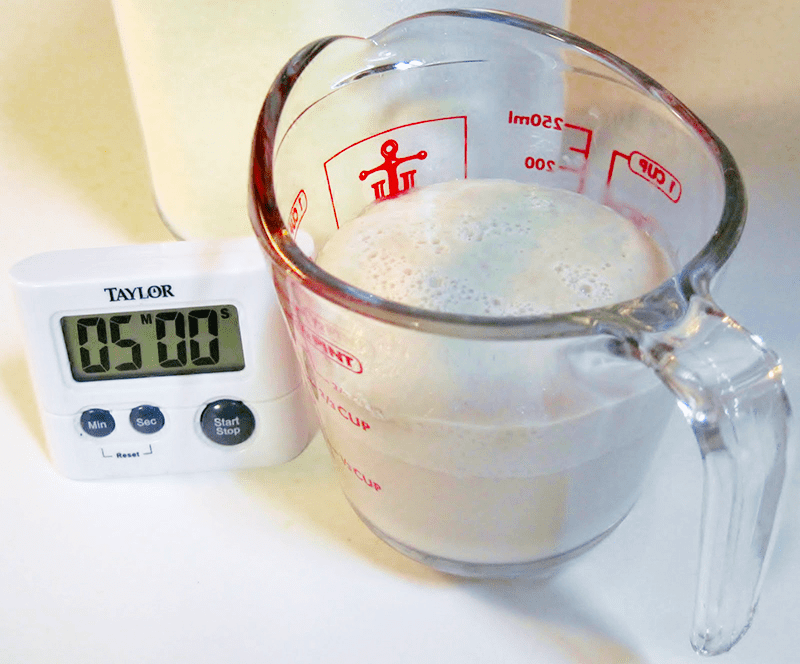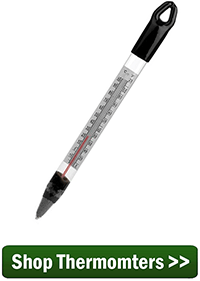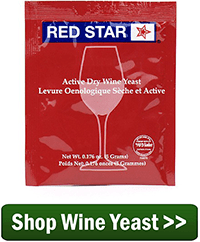 You mentioned once that you don’t recommend rehydrating wine yeast, but I couldn’t find a follow-up or reasons why. My supplier in the KC area says they always rehydrate as do most wine yeast packs. I’ve tried both ways and haven’t noticed a difference other than rehydrated yeast usually starts working quicker. I am confused….
You mentioned once that you don’t recommend rehydrating wine yeast, but I couldn’t find a follow-up or reasons why. My supplier in the KC area says they always rehydrate as do most wine yeast packs. I’ve tried both ways and haven’t noticed a difference other than rehydrated yeast usually starts working quicker. I am confused….
Name: Lynn T.
State: KS
—–
Hello Lynn,
There is nothing wrong with rehydrating the dried wine yeast. Just as you have stated, the fermentation will start off more quickly by a few hours. Some winemakers will refer to this rehydration process as waking up the wine yeast. But if someone came up to me and asked, is rehydrating yeast necessary? My answer would be a definite, no.
The reason I don’t generally recommend rehydrating dried wine yeast in passing is because of the potential for accidentally killing the wine yeast during the rehydration process. We run into this issue quite often, particularly with beginning winemakers.
It is usually because the water was way too hot and not checked and controlled with a thermometer, or the dried wine yeast was left in the warm water way too long because they didn’t use a timer. Both temperature and time are critical to the rehydration process.
Some of the yeast cells will die off while in the warm water, even if the correct temperature is used. If the wine yeast is left in for longer than directed, then an excessive amount of yeast cells will die. If the water is a hotter than directed, then the wine yeast will start dying off faster than the directions intended. Either issue can cause a significant amount of yeast cells to die – potentially all of them. The result is a fermentation that doesn’t start at all.
The point here is go ahead and rehydrate the wine yeast – your fermentation will start off more quickly and more vigorously – but follow the directions, exactly. That means using a thermometer to get the water to the right temperature and using a watch or timer to make sure your yeast does not have an extended stay in the warm water.
If you don’t want to bother with rehydrating the dried yeast along with the thermometers and timers, don’t worry about it. Rehydrating yeast is not a necessity. Your fermentation will start just the same, but it might take a few more hours to do so.
The blog post How To Add Yeast To A Wine Must discusses 3 different methods you can use to add your wine yeast to the wine must. You may want to take a look at this to see which method suits you best.
Happy Winemaking,
Ed Kraus
—–
Ed Kraus is a 3rd generation home brewer/winemaker and has been an owner of E. C. Kraus since 1999. He has been helping individuals make better wine and beer for over 25 years.

I always rehydrate my yeast. Why? Because the instructions tell you to and how to do it. It is not difficult nor time consuming if you can follow the simple directions on the package. I like doing it because I tell if my yeast is good or not…I don’t have to wait days to figure out the yeast I pitched was already dead. I am always rewarded with a strong, healthy fermentation. I figure the yeast manufacturer knows more about things than I do….no offense intended Ed!
I also always rehydrate – and use Go-Ferm protect in the water.
But i learned ages back in school that yeast always should be activated in lukewarm water – so i keep it at 37 – 38 °C instead of the 43 °C that is recommended on the bag.
I guess my thought is – i wouldn´t put a baby in a 43 °C (not elbow warm) water, so why put the sensitive yeast in that heat-bath.
I always get strong, happy, fermentations. 🙂
If I rehydrate the yeast, I use the grape juice or distilled water and not tap water. Tap water is usually treated with chlorine at the water treatment plant and the residual Cl could kill some of the yeast.
I used to use distilled water but then I read that tap water is preferable because it contains minerals which is beneficial to the yeast. Our local water does have chlorine in it but I have never had a problem with my fermentations.
out of probably 60 years of making country wines, I think I rehydrated mu yeast twice. That said, I have never had a problem with a good yeast doing its job and making very good to excellent wines. Buy a yeast for the kind of wines you want to make and sprinkle on the top and be patient.
If you have done a “cold soak” of the grape must what is your recommendation or procedure for using the yeast hydrated or unhydrated?
Gerald, a cold soak of the grapes has no bearing on the decision to hydrate the yeast or not. We still recommend just sprinkling the yeast on top of the must.
joeswine@yahoo.com. never rehydrated my yeast ,with the exception of when I first started out with grapes and bucket juice but not with any kits .
I always prepare my juice or must with all the sugar and supplements except the K metabisulfite. I then remove 1 cup of it to add my yeast to. I then add my 1/16th tsp per gal of the metabisulfite. After 24 hrs I add my very active yeast to the primary and OFF IT GOES!